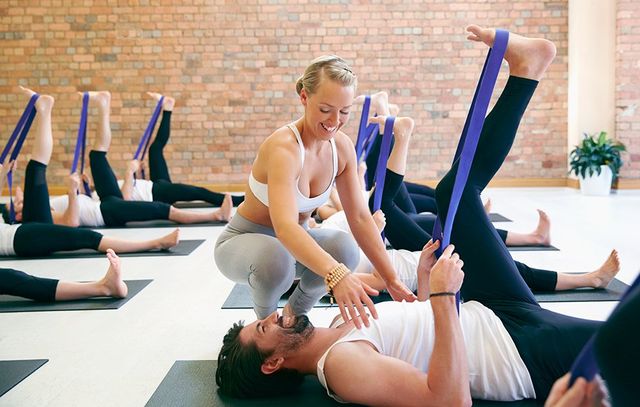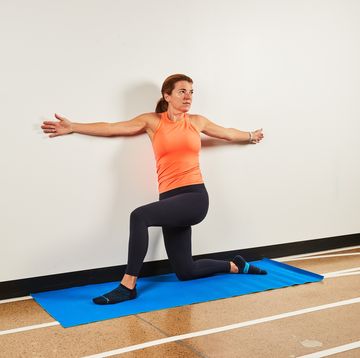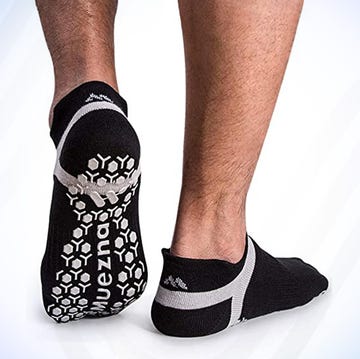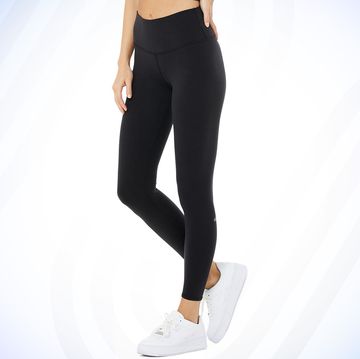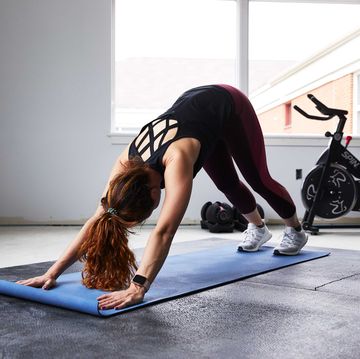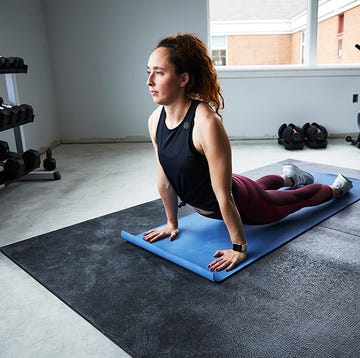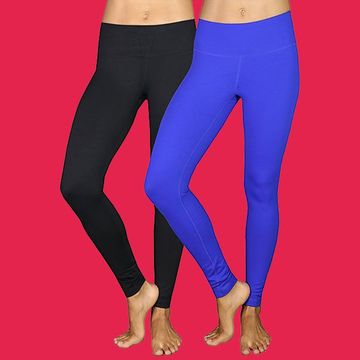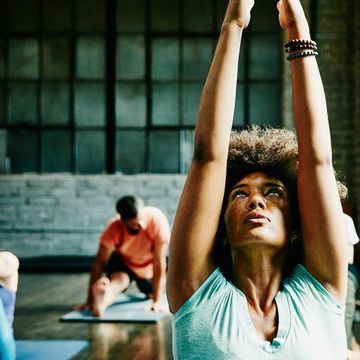When it comes to recovery days, gentle yoga is a smart, low-impact way to unwind. But if you’re a regular runner, your practice likely won’t look the same as that of the super-pliable person on the mat beside you—you know, the one whose off-the-charts flexibility makes you curse your tight hips and hamstrings.
“A good yoga teacher will understand and respect that a runner may present with less flexibility than some other students,” says Julie Erickson, an RRCA certified running coach and owner of Endurance Pilates and Yoga Studio in Boston. “Some of this is a function of the adaptations the body makes for continuing to run injury-free.” For example, runners develop strong lower abs, glutes, and inner thighs to stabilize the body, keep the legs in line, and prevent wear and tear on the joints, she says.
Rather than make flexibility the aim of your practice, your focus should be on improving overall range of motion to boost your running economy. Here, yoga teachers share six reasons why you’ll benefit from telling them you’re a runner long before you say “Namaste.”
There Are Poses That Can Strengthen Your Weak Points…
“I can often spot the runners in the studio by the middle of the practice. Tight hip flexors, hamstrings, calves, and feet, and, for longer-distance runners, an imbalance of strong lower torso versus weak upper torso, all scream runner,” says Erin Michaela Sweeney, a yoga instructor in Claremont, California. “Given a heads-up before class, I’m at least able to guide the runner toward ways to lengthen the backs of the legs and activate the arms in poses.”
Your instructor may even restructure the flow specifically for you. When she knows a runner is present, Lauren Murray, owner of Lauren Marie Yoga in Milwaukee, Wisconsin, adds more gentle forward folds to lengthen and loosen calves and hamstrings. “I also like to include pigeon pose (pictured above) or a variation of it to help with the outer hips, half splits for the calves, and low lunge to open the hip flexors,” she says. “Playing with foot engagement while seated—for example, flexing the foot [or] turning the foot outward or inward—can also help stretch different parts of the leg as well, like the IT band.”
And Others That Will Empower You
Being a runner doesn’t mean every part of practice will be a struggle. You actually have a leg up in power poses that take advantage of your strong quads. “What they lack in lower body flexibility, runners make up for in strength,” says Murray. “Balancing postures like Warrior III (pictured above), and tree pose variations can take a runner’s mind off of intense stretching and give them a sense of light-heartedness and achievement.”
Your Form May Need an Adjustment
All those miles you log can lead to movement imbalances, especially in the ankles, knees, and hips, says Ling Acott, a yoga teacher and former triathlete and marathoner in New York City. “I would repeat cues to remind runners of ankle and feet stabilization—pressing into ‘all corners’ of the feet—to correct pronation or supination,” she says, and also to pay attention to evenly activating inner and outer thigh muscles in chair pose. “This rebalancing work reduces uneven wear-and-tear in the joints of the hips and lower limbs and potential impingement and pain in the long run.”
Props can come in handy, too. Your instructor may have you tuck a blanket or block beneath your buttock in pigeon to keep your hips in alignment, or give you a strap to aid in hamstring stretching.
It Can Be Difficult to Quiet Your Competitive Side
For a PR-focused runner, setting aside expectations doesn’t come naturally. “Because running can activate the competitive nature in a person’s makeup, instructors can … assist them through words and encouragement to keep their focus inwards, not on external results or other students,” says Ann Green, a runner and yoga educator in Ontario, Canada. Your movement on the mat will differ from the rhythm you find on the pavement, but it can be just as meditative, she says.
Breathing May Be a Challenge
“Runners tend to have a tighter diaphragm and pelvic floor than most, and this could lead to compensating their movements or shortening of breath in a class,” says Green. She uses gentle poses like cat-cow, reclined cobbler’s pose, and legs up the wall to alleviate tension in these spots. Listen closely to your teacher’s reminders to move with your breath, and back off in poses where your breathing feels strained. The benefits of this attention to your breathing can extend into your running practice.
RELATED: I Got Faster by Breathing Better
Smart Practice Can Make You an Even Better Runner
“To effectively run, your muscles need to both contract and extend,” says Francesca Budesheim, manager of Corepower Yoga in Austin. “More often than not, runners’ strong and tight muscles hinder them from reaching peak performance.” Yoga can further develop strength and flexibility in a runner’s priority areas, such as the core, quads, and hamstrings, but it “also strengthens the areas running ignores,” says Budesheim. Think shoulders and hips.
“Runners can get very tight in the shoulders and chest,” says Irena Miller, a certified yoga teacher in Cincinnati, Ohio. “Using yoga poses to open the upper body will enable you to breathe more effectively, keep your energy up, and avoid sore shoulders.” Gently stretching tight quads and hip flexors can also alleviate lower back pain caused by muscle imbalances, Miller says.
When you tell your instructor about your running habit, go one step further to discuss your specific trouble spots. “No two runners are the same,” says Murray. “Don’t hesitate to ask questions and let us design a practice that will help you go the distance.”
